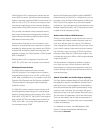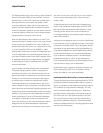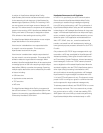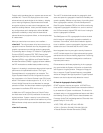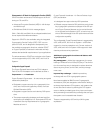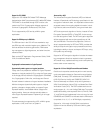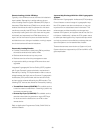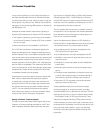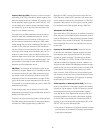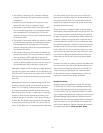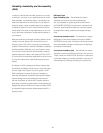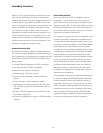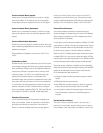Remote Loading of Initial ATM Keys
Typically, a new ATM has none of the fi nancial institution’s
keys installed. Remote Key Loading refers to the pro-
cess of loading Data Encryption Standard (DES) keys to
Automated Teller Machines (ATMs) from a central admin-
istrative site without the need for personnel to visit each
machine to manually load DES keys. This has been done
by manually loading each of the two clear text key parts
individually and separately into ATMs. Manual entry of
keys is one of the most error-prone and labor-intensive
activities that occur during an installation, making it expen-
sive for the banks and fi nancial institutions.
Remote Key Loading Benefi ts
• Provides a mechanism to load initial ATM keys without
the need to send technical staff to ATMs
• Reduces downtime due to key entry errors
• Reduces service call and key management costs
• Improves the ability to manage ATM conversions and
upgrades
Integrated Cryptographic Service Facility (ICSF), together
with Crypto Express2, support the basic mechanisms in
Remote Key Loading. The implementation offers a secure
bridge between the highly secure Common Cryptographic
Architecture (CCA) environment and the various formats
and encryption schemes offered by the ATM vendors. The
following ICSF services are offered for Remote Key loading:
•
Trusted Block Create (CSNDTBC)
This callable service
is used to create a trusted block containing a public key
and some processing rules.
•
Remote Key Export (CSNDRKX)
This callable service
uses the trusted block to generate or export DES keys
for local use and for distribution to an ATM or other
remote device.
Refer to Application Programmers Guide, SA22-7522, for
additional details.
Improved Key Exchange With Non-CCA Cryptographic
Systems
IBM Common Cryptographic Architecture (CCA) employs
Control Vectors to control usage of cryptographic keys.
Non-CCA systems use other mechanisms, or may use
keys that have no associated control information. This
enhancement provides the ability to exchange keys
between CCA systems, and systems that do not use Con-
trol Vectors. Additionally, it allows the CCA system owner
to defi ne permitted types of key import and export which
can help to prevent uncontrolled key exchange that can
open the system to an increased threat of attack.
These enhancements are exclusive to System z10, and
System z9 and are supported by z/OS and z/VM for z/OS
guest exploitation.
38




